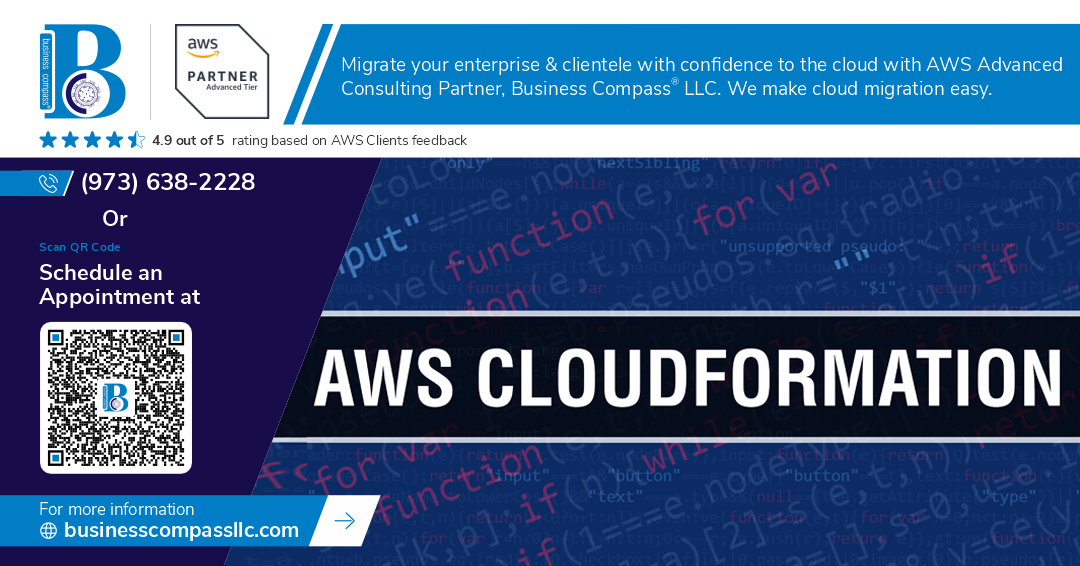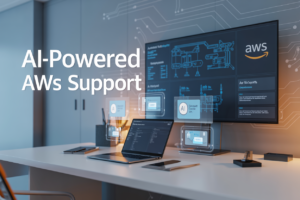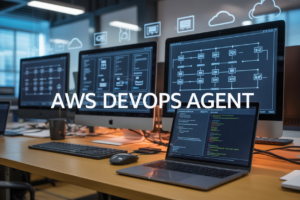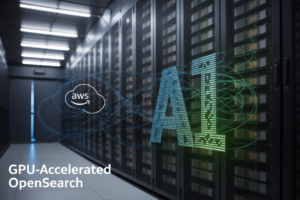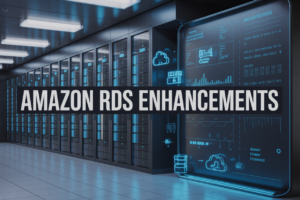You’ve spent hours debating with your team: Terraform or CloudFormation? The infrastructure-as-code showdown that’s splitting DevOps engineers into two passionate camps.
I get it. Choosing the wrong IaC tool can mean months of technical debt and frustrated developers who curse your name in Slack channels.
In this comparison of Terraform vs. CloudFormation, I’ll break down exactly what makes each tool shine (and where they seriously fall short) so you can make a decision your future self won’t hate.
Both promise infrastructure automation nirvana, but their approaches couldn’t be more different. One offers multi-cloud flexibility while the other provides deep AWS integration.
But here’s what nobody tells you about these tools until it’s too late…
Understanding Infrastructure as Code (IaC)
A. The evolution of infrastructure management
Remember when server provisioning meant submitting IT tickets and waiting weeks? Those dark ages are gone. We’ve evolved from manual configuration to scripts, then to specialized templates, and now to full-fledged code that manages entire infrastructure ecosystems. Modern engineers define complete environments with a few keystrokes—a revolution that’s transformed how we build and scale.
B. Core principles and benefits of IaC
Think of IaC as your infrastructure’s DNA written in code. The magic happens through four key principles: version control (tracking every change), consistency (identical environments every time), automation (goodbye human error), and documentation (the code itself tells the story). Companies adopting IaC cut deployment times by 80% while boosting reliability. Your infrastructure becomes predictable, repeatable, and infinitely scalable.
C. How IaC transforms DevOps practices
IaC is the secret sauce in modern DevOps. When your infrastructure lives as code, development and operations teams finally speak the same language. Collaboration skyrockets as both teams contribute to infrastructure repositories. CI/CD pipelines deploy not just applications but entire environments. The result? Deployment frequency jumps from monthly to daily, recovery times shrink from days to minutes, and innovation accelerates.
D. Key considerations for selecting an IaC tool
Picking the right IaC tool isn’t just a technical decision—it’s strategic. Consider your team’s programming skills, existing cloud investments, and long-term architectural vision. Ask tough questions: Do you need multi-cloud flexibility? How important is a native integration with your primary cloud? Will your junior engineers understand the syntax? The best tool aligns with both your current reality and future ambitions.
Terraform: The Multi-Cloud Powerhouse
A. Origins and development by HashiCorp
Terraform burst onto the scene in 2014 when HashiCorp’s Mitchell Hashimoto and Armon Dadgar got fed up with cloud configuration headaches. They built something revolutionary – an open-source tool that could manage infrastructure across multiple cloud providers with a single, consistent workflow. Game changer.
AWS CloudFormation: The Native AWS Solution
Integration with AWS services ecosystem
CloudFormation just works with AWS – period. It’s built specifically for AWS resources, meaning you’ll get day-one support for new services and features. This tight integration eliminates compatibility issues and gives you access to every AWS service parameter without workarounds or custom plugins.
JSON and YAML template options
Pick your poison: JSON or YAML. CloudFormation supports both template formats, letting you choose based on your team’s preference. YAML’s more readable with comments and less punctuation, while JSON offers stricter validation if that’s your thing.
Stack management and drift detection
CloudFormation organizes resources into stacks that you can create, update, or delete together. The drift detection feature is a lifesaver – it alerts you when someone’s made manual changes outside your templates, preventing configuration nightmares.
AWS-specific optimizations and advantages
The AWS-native advantage is real. CloudFormation gives you capabilities other tools can’t match: StackSets for multi-account deployments, custom resources for unsupported services, and change sets to preview modifications before implementing them. It’s AWS’s baby, so it gets special treatment.
Technical Comparison: Under the Hood
A. Language and syntax differences
Terraform uses HCL (HashiCorp Configuration Language) – clean, declarative, and readable even for beginners. CloudFormation? JSON or YAML, which can get unwieldy fast. HCL feels more natural for coding while CloudFormation’s structure feels distinctly AWS-flavored.
Performance and Scalability Factors
A. Handling large-scale infrastructures
When your infrastructure hits the big leagues, both tools start showing their true colors. Terraform pulls ahead with its state management and module system that handles sprawling multi-region setups without breaking a sweat. CloudFormation stacks can get unwieldy fast, though nested stacks help tame the complexity if you’re all-in on AWS.
B. Execution speed and resource consumption
Terraform generally executes faster than CloudFormation, especially for complex changes. CloudFormation’s sequential processing can feel like watching paint dry when you’re deploying hundreds of resources. Terraform’s parallel execution model means your team spends less time waiting and more time building.
C. Managing complex dependencies
Dependencies are where things get sticky. CloudFormation handles AWS resource dependencies beautifully but struggles with external systems. Terraform’s dependency graph is more flexible, letting you orchestrate complex deployment sequences across different providers without resorting to hacky workarounds.
D. Enterprise-grade features comparison
The enterprise battle isn’t even close. Terraform Enterprise offers robust governance features, policy enforcement, and team collaboration that CloudFormation can’t match. AWS does counter with native IAM integration, but organizations managing multi-cloud environments find Terraform’s consistent workflow across clouds invaluable.
Ecosystem and Community Support
Ecosystem and Community Support
A. Third-party integrations and modules
Terraform’s Registry houses thousands of modules and providers, while CloudFormation has AWS-focused extensions through the AWS CDK. The difference? Terraform’s ecosystem spans multiple clouds and services, making it the Swiss Army knife for multi-cloud setups.
B. Community size and activity
Terraform boasts a massive GitHub following (34K+ stars) with active forums and meetups worldwide. CloudFormation’s community is smaller but deeply integrated with AWS user groups. When you’re stuck at 2 AM, Terraform’s broader community means faster answers.
C. Enterprise support options
Both tools offer solid enterprise support, but differ in approach. HashiCorp provides Terraform Enterprise with governance features, while AWS includes CloudFormation support in their standard support plans. Your existing AWS relationship might tip the scales here.
D. Learning resources and training availability
The learning curve matters! AWS offers official CloudFormation workshops and certifications, while Terraform has HashiCorp’s learning portal and certification program. YouTube tutorials for Terraform outnumber CloudFormation 3-to-1, making self-learning easier for Terraform newcomers.
Real-World Use Cases: Where Each Tool Shines
Real-World Use Cases: Where Each Tool Shines
A. Multi-cloud vs. AWS-focused environments
Terraform crushes it for multi-cloud setups, handling AWS, Azure, and GCP with the same syntax. CloudFormation? It’s AWS’s home turf champion. If you’re all-in on AWS, CloudFormation’s deep integration feels like magic. For those juggling multiple cloud providers, Terraform’s consistent workflow saves endless headaches.
Making Your Decision
A. Business requirements assessment framework
Choosing between Terraform and CloudFormation starts with your business needs. Map your requirements against each tool’s strengths. Need multi-cloud flexibility? Terraform shines. Building exclusively on AWS? CloudFormation’s native integration might win out. Consider deployment frequency, compliance requirements, and how your infrastructure might evolve.
Choosing between Terraform and CloudFormation ultimately depends on your specific infrastructure needs. Terraform offers multi-cloud flexibility, a more approachable syntax, and strong community support, making it ideal for organizations working across different cloud providers. CloudFormation, with its deep AWS integration, provides unmatched compatibility with AWS services and is perfect for teams fully committed to the AWS ecosystem.
As you evaluate your IaC strategy, consider your team’s existing skills, future cloud strategy, and specific technical requirements. Both tools can effectively manage infrastructure at scale, but your organization’s unique circumstances will determine which one aligns best with your goals. Whichever tool you choose, implementing infrastructure as code will significantly improve your deployment consistency, operational efficiency, and ability to manage complex cloud environments.










